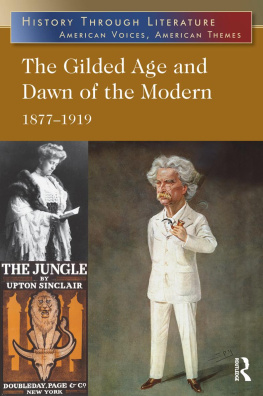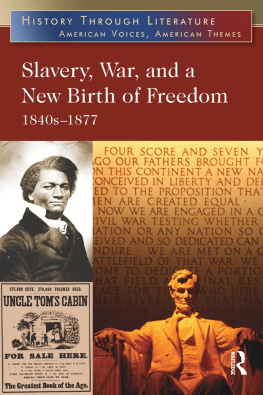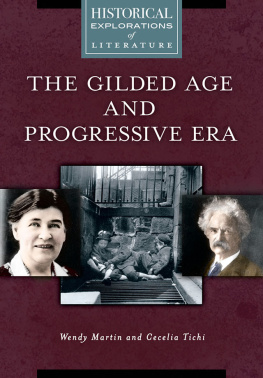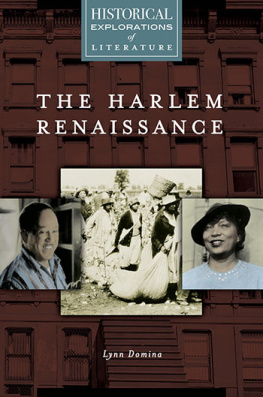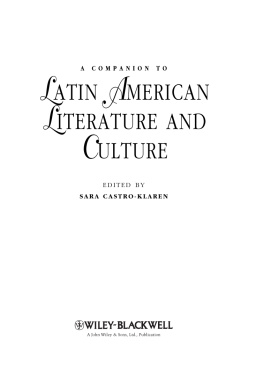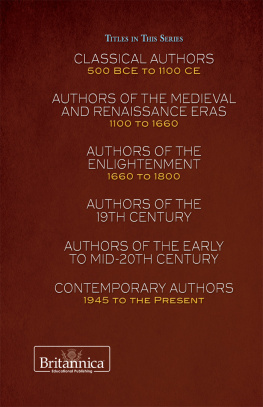The Gilded Age and Dawn of the Modern
18771919
Editorial Advisers
Steven A. Goldberg
Past President, National Council for the Social Studies
Social Studies Department Chair
New Rochelle High School, New Rochelle, New York
Louise A. Hazebrouck
English teacher
Horace Greeley High School, Chappaqua, New York
Deborah Boxer Minchin
Social Studies teacher
New Rochelle High School, New Rochelle, New York
HISTORY THROUGH LITERATURE
AMERICAN VOICES, AMERICAN THEMES
The Gilded Age and Dawn of the Modern
18771919
Jeffrey H. Hacker, Editor
First published 2014 by M.E. Sharpe
Published 2015 by Routledge
2 Park Square, Milton park, Abingdon, Oxon Ox14 4RN
711 Third Avenue, New York, NY, 10017, USA
Routledge is an imprint of the Taylor & Francis Group, an informa business
Copyright 2014, Taylor & Francis. All rights reserved.
Cover images (clockwise from top left) provided by: Fotosearch/Getty Image; The Grager Collection, NYCAll rights reserved; Library of Congress
Interior images provided by: The Granger Collection, NYCAll rights reserved, p. 6; The Granger Collection, NYCAll rights reserved, p. 24; The Granger Collection, NYCAll rights reserved, p. 40; The Granger Collection, NYCAll rights reserved, p. 52; The Granger Collection, NYCAll rights reserved, p. 67; The Granger Collection, NYCAll rights reserved, p. 74; Library of Congress, p. 85; Buyenlarge/Getty Images, p. 109; The Granger Collection, NYCAll rights reserved, p. 117; AP Photo, p. 126; Library of Congress, p. 139; The Granger Collection, NYCAll rights reserved, p. 148; Library of Congress, p. 162; Universal History Archive/Getty Images, p. 181; Fotosearch/Getty Images, p. 188.
The EuroSlavic fonts used to create this work are 19862013 Payne Loving Trust.
EuroSlavic is available from Linguist's Software, Inc.,
www.linguistsoftware.com, P.O. Box 580, Edmonds, WA 98020-0580 USA
tel (425) 775-1130.
Library of Congress Cataloging-in-Publication Data
The Gilded Age and dawn of the modern, 18771919 / Jeffrey H. Hacker, editor.
pages cm. (History through literature: American voices, American themes) (Sharpe insights)
Includes bibliographical references and index.
ISBN 978-0-7656-8342-7 (cloth: alk. paper) ISBN 978-0-7656-8326-7 (pbk.: alk. paper)
ISBN 978-0-7656-8327-4 (electronic: alk. paper)
1. United StatesHistory18651921Sources. 2. United StatesIntellectual life19th centurySources. 3. United StatesIntellectual life20th centurySources. 4. Literature and historyUnited StatesHistory19th century. 5. Literature and historyUnited StatesHistory20th century. I. Hacker, Jeffrey H., editor of compilation.
E661.G454 2013
973.8dc23
2013029902
No part of this book may be reprinted reproduced or utilised in any form or by any electronic, mechanical, or other means, now known or hereafter invented, including photocopying and recording, or in any information storage or retrieval system, without permission in writing from the publishers.
Product or corpotate names may be trademarks or registered trademarks, and are used only for identification and explanation without intent to infringe.
ISBN 13: 9780765683427 (hbk)
ISBN 13: 9780765683267 (pbk)
Contents
History Through Literature: The Gilded Age and Dawn of the Modern (18771919) is the fourth in a six-volume series designed to support interdisciplinary coursework and independent reading in American history and letters. The material presented in each volume is selected and organized to enrich the study of the nations historical record, its literary heritage, and their mutual influences.
Each volume begins with a chronology that identifies, defines, and places in context the key historical events, literary works, authors lives, and cultural movements of the period in question. The centerpiece of the volume is a comprehensive overview essay that highlights the eras major historical trends, social and cultural movements, literary voices, and landmark works as reflections of each other and the spirit of the times. The core content comprises 2030 shorter articlesall drawn from the archives of the Sharpe Reference and Sharpe Online Reference imprintson lives and works in period literature, including extended excerpts. Special features called Sidelights apply a different lens to this exploration, focusing on historical literature as a reflection of both the time of the actual events and the time of the writing. In the present volume, for example, Sidelights consider the modernist movement in literature and the arts during the early twentieth century and political interpretations of L. Frank Baums childrens novel The Wonderful Wizard of Oz (1900)a story elevated to cultural icon by the 1939 film version.
Throughout the series, the designation of historical and literary periods is not bound by strict startend dates or specific events (with such notable exceptions as national independence, the Civil War, the Great Depression, and World War II). The lives and works of writers obviously overlap any arbitrarily defined eras, and their styles and themes often evolve in ways that defy neat historical classification. Thus, the designation of historical periods and the selection of subjects in each volume are guided by subjective judgments based on a confluence of factorshistorical events, social and economic trends, and the rise and decline of artistic and cultural movements.
This volume, simply enough, begins with the end of Reconstruction in 1877 and concludes with the establishment of peace after World War I in 1919. Clearly, however, the major writers and literary trends of this period are not easily separated from those of the decades preceding or the decades following. Mark Twain, for example, attained national prominence in the late 1860s and early 1870s but produced the main body of his work in the last three-plus decades of his life, to 1910. The American modernist movement was born in the early years of the twentieth century but did not reach fruition until the 1920s.
Thus, taking a thematic rather than a strictly chronological approach, this volume focuses on the emergence of the United States as a modern, urban, industrial, multiethnic power and the literary movements that accompanied that transformationrealism, naturalism, muckraking journalism, local color, and early modernismas well as the unique perspectives of individual novelists, short-story writers, poets, essayists, and historians.
This was the period in which the United States as we know it today came of age. It was a period of inventionelectric power, steam turbines, internal combustion engines, skyscrapers, the light-bulb, the telephone and telegraph, the automobile, powered flight, and motion pictures. It was a period of major industrial innovation and economic growthwith breakthroughs in steel and machine manufacturing producing a seemingly infinite supply of equipment and goods. Manufacturers, in turn, expanded and redesigned their factories for mass production; large corporations raised the necessary capital and limited liability for such ventures. Wealthy industrialists gained monopolies in key industries, such as oil and the railroads, with little oversight of their business practices, working conditions, or treatment of workers. The demand for unskilled and semiskilled labor expanded exponentially, bringing unprecedented numbers of women and children into the industrial workforce. It was also a period of mass urbanization; from 1880 to 1920, the total population of U.S. cities increased from about 28 percent of all residents to just over 51 percent. Immigrants, especially from Europe, accounted for a growing proportion of the urban labor force. This, in turn, gave rise to another defining feature of the periodnativist resistance to aliens.

